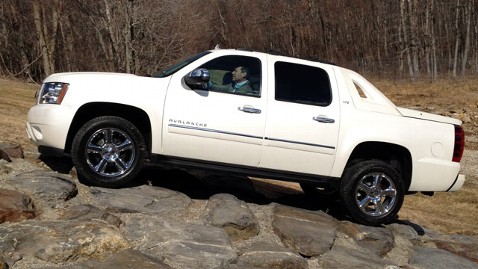American Cars Turning Corner on Quality

ABC News' Jim Avila test drives the Chevy Avalanche (Image Credit: ABC News)
The Consumer Reports test track in central Connecticut is toy town for big kids.
The company buys every car they test, and as our ABC News team approached for a story on the top 10 picks of 2012, dream vehicles from every part of the world were lined up and waiting for us.
There was the FIAT 500 and its new more muscular sister - with the awkward name - the Arbarth. And the American muscle cars, the Dodge Challenger, Chevy Camaro and Ford Mustang. Luxury sedans from Infinity, Toyota, Chrysler and Buick were also lined up for testing.
To show me the new, handsome quality that American car makers are finally building into their "Detroit Iron," Consumer Reports' Dave Champion, the company's head test driver and engineer, took me to the accident avoidance area of the test track.
It's a long straight-away, set up with orange cones to represent a child riding a bike, obstacles to avoid with a quick swerve, and then more cones requiring drivers to swerve back into the driving lane.
I took the wheel of a Chrysler 300 family sedan. It looks nothing like the LeBarons of the 1980's that sunk Chrysler's reputation for nearly 30 years. The fit and finish is perfect, the inside has leather stitching comparable to any European import, and more importantly it allowed even this amateur test driver to avoid the child on the bike and return to the lane while driving at 50 miles per hour - without flipping my ride.
Champion says American cars have caught up to Japanese and German cars, and have even surpassed them in many areas of quality.
"Before we'd say, don't even bother looking at domestics, you know the cars are uncompetitive, and they are unreliable," Champion said.
Now, many American models are not only competing but winning. This month, Consumer Reports named two American-made cars, the Ford Mustang and the Chevy Avalanche pickup truck, to its list of the 10 best cars in the world.
Automobile industry analysts tell us bankruptcy and bailouts have been good to American car companies, in part by enabling them to cut salaries, pensions and healthcare. In the past, the first $4 thousand spent on making each vehicle paid for labor, but now more of that money goes into building the car itself.
"The bailout is a very controversial topic," said Rebecca Lindland, director of research for IHS Automotive in Greenwich, Conn., "but it did allow them (American automakers) to restructure their companies and really generate more revenue that they can put into product."
Champion says he can see more money being spent on the interiors of American cars. "It's nice material, nice and solid, finished well," he said. "Everything feels like quality, which in the past would be really cheap and chintzy."
In fact, some foreign car makers are having trouble keeping up with Detroit these days.
The Japanese, in particular, are struggling to compete, Champion said. The strength of the yen makes materials more expensive and Japanese automakers have had to cut back their quality.
I recently rode in a new Mazda 3, which had amazing personality, and pep for a 4-cylinder economy car. Four doors, and lots of space for the driver and front passenger, plus a bright green paint job that made people take notice.
But the dashboard and interior didn't have the pizzazz you would expect from the Japanese.
The Americans are coming on strong and sales figures again are up. GM has returned to its ranking as the number one brand sold worldwide; Chrysler sales are up too.
Fun on the test track translating into cars Americans want to buy again.